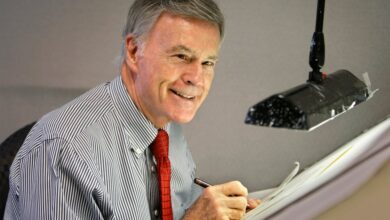India’s Modi, Humbled by Voters, Faces Potent Economic Struggles

Before the Indian election results emerged this week, Prime Minister Narendra Modi was widely viewed as a charismatic and popular strongman celebrated by the business world for elevating its importance, even as he failed to solve a vexing problem: how to turn swift economic growth into critically needed jobs.
After the election, Mr. Modi finds himself staring at that same monumental puzzle, yet relegated to an uncomfortable new status. He is the head of a party that has been chastened at the polls, forcing him to forge a coalition to maintain power.
Mr. Modi’s governing authority is likely to be constrained by the complexities of keeping his coalition partners on his side. He could not solve India’s most deep-seated economic challenge when he wielded a monopolistic hold on power. Now, he is a weakened leader who must balance additional interests, while still lacking an obvious way to improve living standards.
“There has been a sense that employment growth has been weak in the last four, five years,” said Arvind Subramanian, a former chief economic adviser to the Modi administration, who is now a senior fellow at the Peterson Institute for International Economics in Washington. “How do you create more jobs? This is really India’s central economic challenge, but I think the government will find itself with relatively limited tools.”
The humbling of Mr. Modi’s party resonates in part as an expression of popular frustration that India remains a land of economic peril for hundreds of millions of people, as well as a country defined by astonishing contrasts in wealth. In major cities, five-star hotels boasting sumptuous spas look down on teeming slums that lack plumbing. In rural areas, malnutrition prevails under many roofs, and families struggle to find the money to keep children in school.
Though its working-age population numbers roughly one billion, India has only 430 million jobs, according to the Center for Monitoring Indian Economy, an independent research institution in Mumbai. And most of those counted as employed are stuck in precarious circumstances as day laborers and farm hands, lacking reliable wages and government workplace protections.
Improved livelihoods are evident in many cities, from the high-rise apartments filling out the horizons to air-conditioned shopping malls and luxury cars choking roads. But the gains are narrowly concentrated. Professionals who work in technology centers in the south of the country and around the capital of New Delhi have enjoyed substantial progress. A rapidly growing domestic auto industry is a source of relatively high-paying jobs.
Magnates like Gautam Adani, one of Asia’s richest men, have seen their business empires enhanced by their relationships with Mr. Modi and his willingness to eviscerate regulatory impediments to their greater fortune.
But most Indian workers are effectively marooned in the so-called informal sector — laboring at roadside stalls, in small shops and in itinerant trades where they have no guarantee of income or the possibility of advancement.
The failure of economic growth to yield more jobs is in large part the story of how India missed out on the manufacturing boom that played out in East Asia over recent decades. From South Korea and China to Thailand, Indonesia and Vietnam, hundreds of millions of people have escaped poverty via wages earned in factories.
India has not shared in that transformation in large part because of a historical focus on self-sufficiency, a disdain for international trade and stultifying bureaucracy that has discouraged investment.
“The whole manufacturing thing bypassed India,” Mr. Subramanian, the economist, said. “It’s that bigger development failure that is continuing to haunt India.”
Mr. Modi has pursued initiatives aimed at bolstering manufacturing and increasing exports. His administration has streamlined regulations and improved ports. Yet despite some high-profile developments like Apple moving the assembly of some iPhones to India, manufacturing makes up only 13 percent of the country’s economy, according to World Bank data. That is a lower share than a decade ago, when Mr. Modi took office.
Foreign money has flowed into India’s stock markets, multiplying share prices, a key element of Mr. Modi’s pro-business image. But persuading international investors to put money directly into Indian companies — a riskier bet — has been a harder sell. His Hindu nationalist party has demonized the Muslim minority, a source of social ferment that has raised fears of instability.
The election could further discourage additional investment, because Mr. Modi will likely have a more difficult time gaining passage of stalled reforms sought by business, including laws making it easier to amass land and hire and fire workers.
With no clear pathway toward economic dynamism and more challenging political circumstances, Mr. Modi might resort to a time-honored method of shoring up support: He will expand social welfare programs, tapping government coffers to hand out more cash to communities in need.
Such a course could potentially diminish available funding for the advancement of the government’s signature program — its aggressive construction of highways, ports, airports and other infrastructure. Those plans are central to maintaining India’s strong economic growth and the broader campaign to encourage investment in manufacturing.
Some fear that any short-term pursuit of political favor through the scattering of money could undermine the longer-term project of spurring jobs through the promotion of industry.
“You need to ensure that the benefits of economic development reach the maximum number of people,” said Shumita Deveshwar, chief India economist at Global Data.TS Lombard, a forecasting and consulting firm in London. “If people keep depending on welfare and are not getting the benefits of economic development, then it basically just creates stagnation.”
Geopolitical alterations appear to give India a fresh crack at growing its manufacturing base. As the United States and China engage in trade hostilities, multinational brands are seeking to reduce their heavy dependence on Chinese factories to make their goods. Major retailers like Walmart are increasingly looking to India as an alternative to China.
But capturing that potential investment demands continued upgrading of highways, rail connections and ports, along with a focus on vocational training to give people the needed skills to take up factory work.
Even before the election, there were doubts that Mr. Modi’s administration was moving quickly enough to realize these gains.
“India is a counterweight to China in terms of geopolitics, and we will continue to see some of that investment flowing,” Ms. Deveshwar said. “But the scale at which they are provisioning the ecosystem for these opportunities just is not large enough.”



